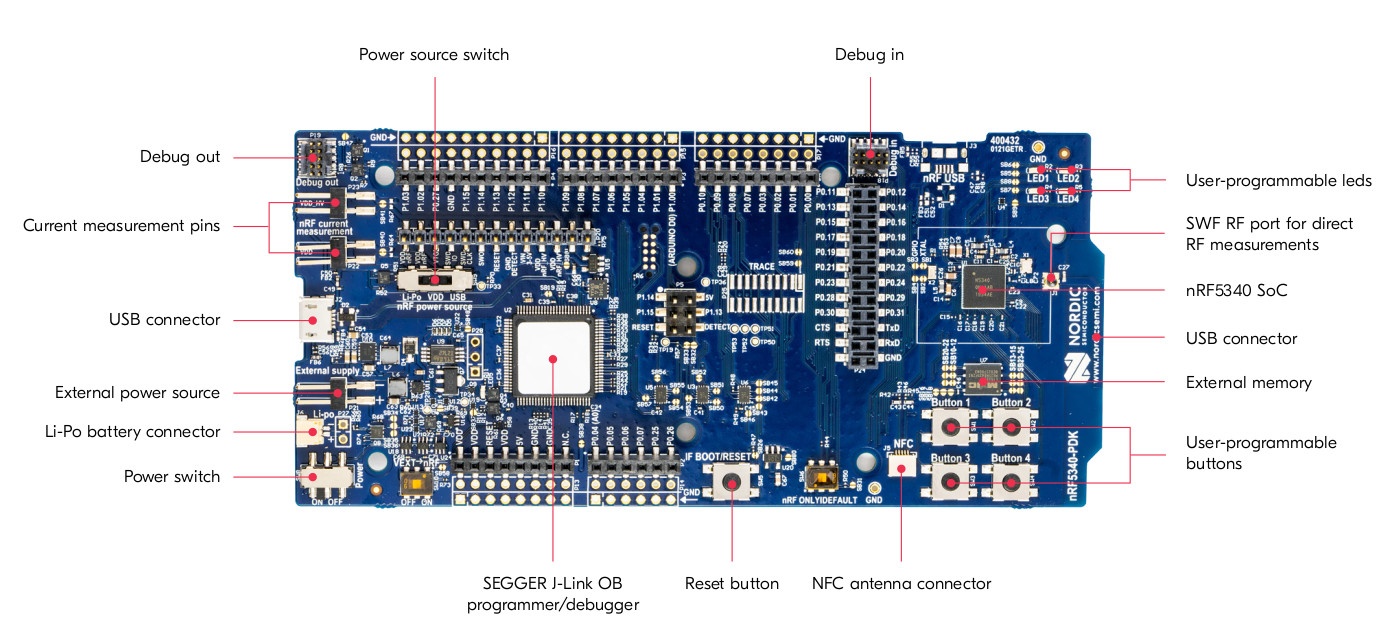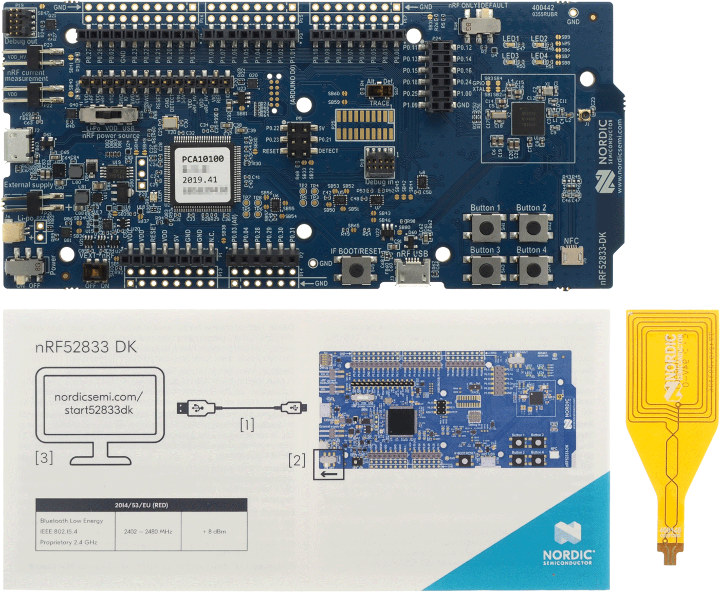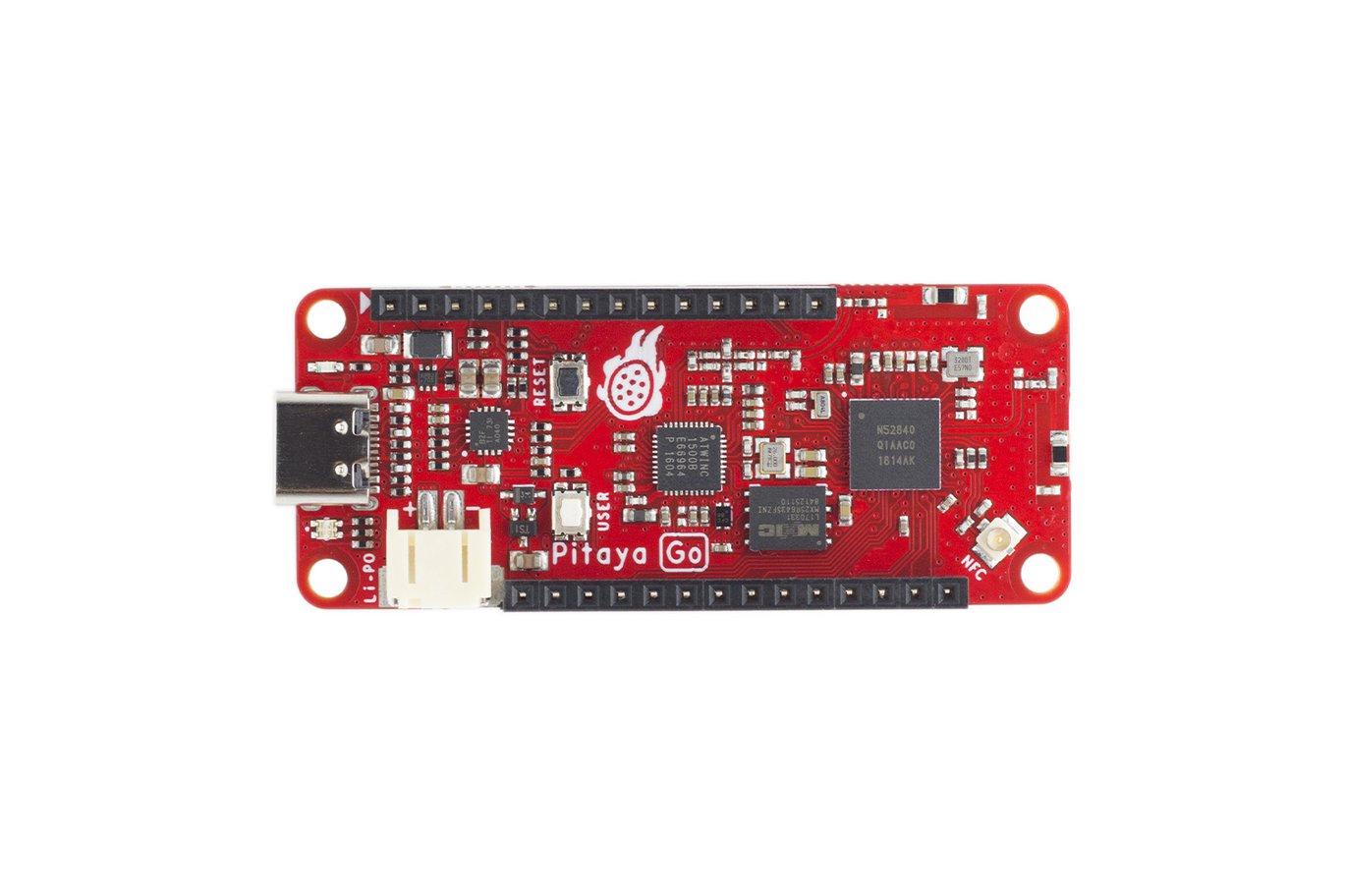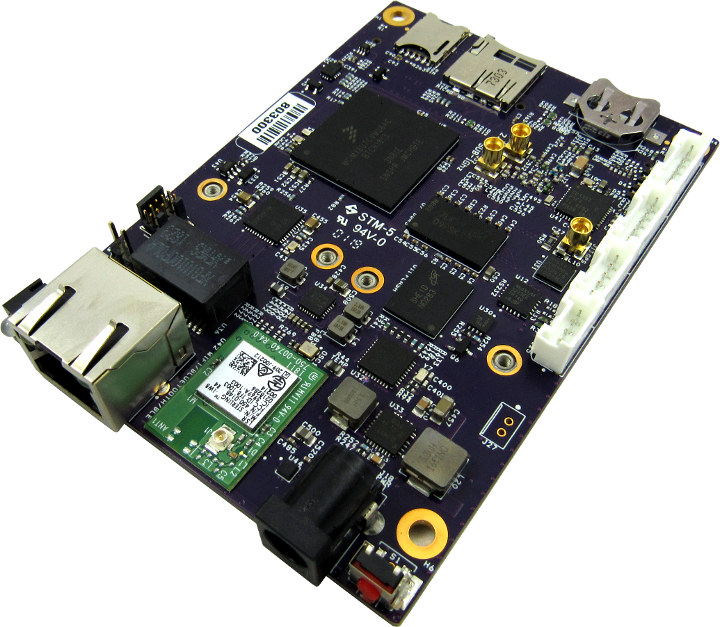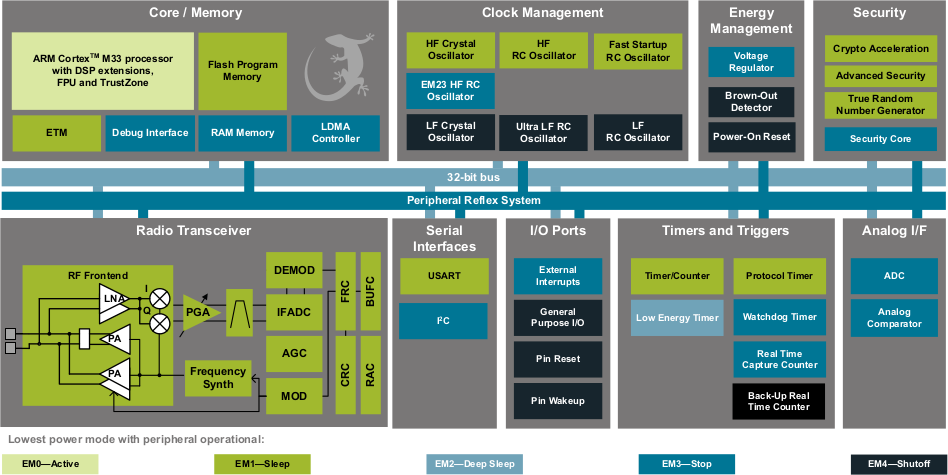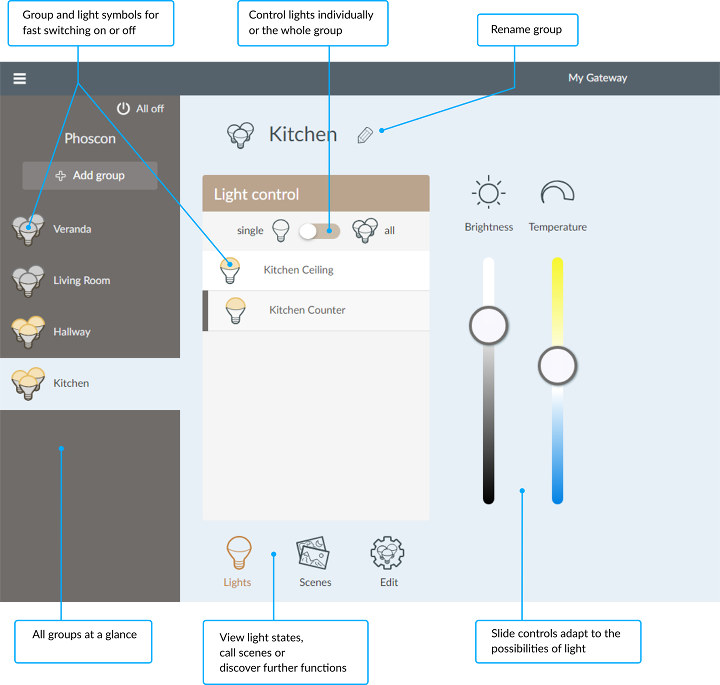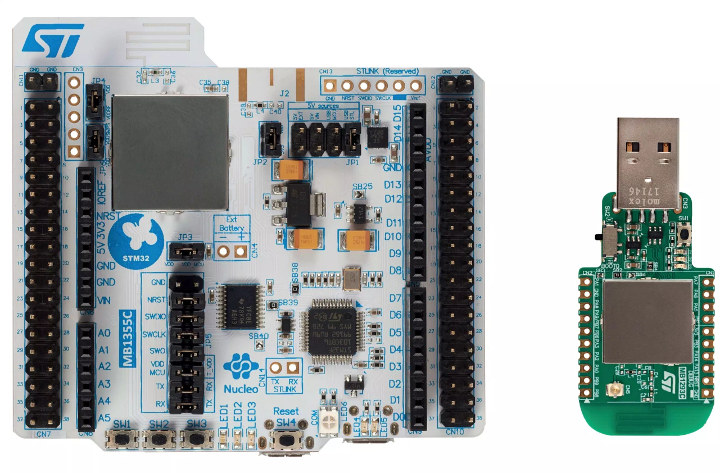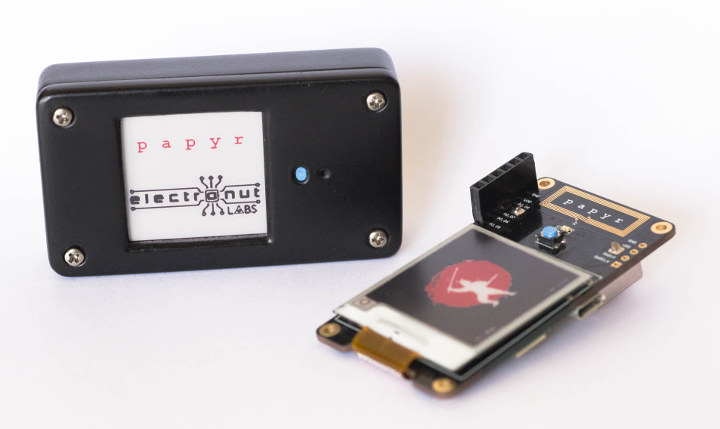After introducing nRF52833 WiSoC with Bluetooth 5.1 direction-finding support last month, Nordic Semiconductors has now launched another multi-protocol wireless SoC with nRF5340 featuring two Arm Cortex-M33 cores and supporting Bluetooth 5.1, Bluetooth Mesh, NFC, Thread & Zigbee. One of the Cortex-M33 is an application core incorporating 1 MB Flash and 512 KB RAM, as well as Arm CryptoCell-312, Arm TrustZone technology, and Secure Key Storage for the highest level of security, and the other Cortex-M33 core is used for networking functions. The company also announced nRF5340 PDK to get started with the new WiSoC. nRF5340 Dual-Core Multiprotocol SoC Key features and specifications: CPU Application core – Arm Cortex-M33 @ 128/64 MHz with 1 MB Flash + 512 KB RAM, 8 KB 2-way set associative cache; CoreMark: 510/255; CoreMark/mA: 65/76 Network core – Arm Cortex-M33 @ 64 MHz with 256 KB Flash + 64 KB RAM, 2 KB instruction cache; CoreMark: […]
Nordic Semi nRF52833 WiSoC Supports Bluetooth 5.1 Direction Finding, Works up to 105ºC
Nordic Semiconductors had added a new member to their RF52 multi-protocol wireless SoCs with nRF52833 that supports Bluetooth 5.1 direction finding and can operate in a wider temperature range between -40ºC and +105°C. The company also introduced nRF52833 DK development kit for Bluetooth Low Energy, Bluetooth mesh, Thread, Zigbee (802.15.4), and 2.4GHz proprietary applications, and some companies have already announced nRF52833 modules. Nordic Semi nRF52833 Bluetooth 5.1 SoC Key features and specifications: MCU Core – Arm Cortex-M4F @ 64 MHz Memory – 128 KB RAM Storage – 512 KB Flash Connectivity Bluetooth 5.1 @ 2 Mbps/1 Mbps/500 kbps/125 kbps 802.15.4 (Thread/Zigbee) @ 250 kbps 2.4 GHz proprietary @ 2 Mbps / 1 Mbps NFC-A tag TX power – Programmable from +8 dBm to -20 dBm in 4 dB steps Sensitivity Bluetooth 5: -103 dBm at 125 kbps; -98 dB at 500 kbps; -95 dBm at 1 Mbps; -92 dBm at […]
Pitaya Go is an IoT development board with multi-protocol wireless connectivity
One of the challenges in starting a new IoT project is the question of what connectivity to use. Depending on the nature of a project, there are several wired and wireless connectivity options that can be used to power a project and ensure it’s a success. We have WiFi, Bluetooth, Zigbee, Zwave, LoRa, ZigFox, Thread, NB-IoT, 3G/4G, and others. You can use from anyone, but which one to use is another thing because most development board only support 1 or 2 of those. Well, with the introduction of the Pitaya Go, you don’t have to worry so much about that decision. The Pitaya Go is an IoT development platform with multiprotocol wireless connectivity built-in. The Pitaya Go is based on the Nordic’s high-end multiprotocol SoC nRF52840 and the Microchip’s extremely low power Wi-Fi network controller ATWINC1500B. The nRF52840 SoC is the most advanced member of the nRF52 Series SoC family, and it […]
Gateworks Ventana GW5910 SBC Targets WiFi, BLE & Sub-1GHz IoT Gateways
Freescale/NXP i.MX6 based Gateworks Ventana single board computers have been around at least since 2013 and were initially targeting networking processing applications for the industry. They could be used into all sort of gateways with cellular or WiFi connectivity for instance, thanks to the presence of mini PCIe sockets. But the latest Gateworks Ventana GW5910 SBC does not exclusively relies on mini PCIe cards for wireless connectivity, as it includes an onboard Laird Sterling 802.11b/g/n WiFi & Bluetooth module, as well as optional TI CC1352P dual-band Wireless MCU supporting Sub-1GHz and 2.4GHz RF, and an optional on-board u-blox GPS module, which should lower the total cost compared to solutions with mini PCIe cards. Ventana GW5910 specifications: SoC – NXP i.MX6 Dual Core Arm Cortex-A9 SoC Processor @ 800MHz System Memory – 512MB DDR3-800 SDRAM Storage – 256MB Flash System Memory, microSD card slot, mSATA socket Connectivity Gigabit Ethernet Port Onboard […]
Wireless Gecko Series 2 MCU Delivers Extended Range, HW Security
Silicon Labs are recently introduced their Wireless Gecko Series 2 Arm Cortex-M33 MCU family that offers Bluetooth, Zigbee, and Thread connectivity for smart home, commercial and industrial IoT applications. The new family includes a dedicated security core as well as an on-chip radio which according to the company delivers 2.5 times the wireless range of competing solutions. Some of the highlights of the new wireless microcontroller includes: 80 MHz Arm Cortex-M33 core with TrustZone technology High RF performance with +20 dBm output power and up to +124.5 dB link budget Low active current (50.9 µA/MHz) Security Dedicated security core for faster, lower-power encryption Built-in true random number generator (TRNG) Secure boot loading Secure debug access control Tiny 4×4 mm QFN package Lower BOM count and system cost with fewer matching components and no need for external inductors or power amplifiers Flexible pre-certified modules based on EFR32xG21 SoCs planned for Q3 […]
ConBee II ZigBee USB Gateway Dongle and Phoscon Gateway
Dresden-Elektronik has released a new ZigBee USB dongle/stick called ConBee II (a.k.a. ConBee 2) as a direct replacement the first-generation version, as well as the new Phoscon Gateway Raspberry Pi based Zigbee Hub. Beside new Zigbee hardware, the company has also released a new version of deCONZ graphical user interface used to set up and control any ZigBee network without any programming, as well as a new corresponding “Phoscon App” mobile app for home automation control. ConBee II Zigbee USB dongle The new “ConBee II” ZigBee USB dongle/stick features improved signal amplifier with longer radio range, and is based on a 32-bit Arm Cortex-M0 microcontroller (Microchip ATSAMR21E18A) instead of an 8-bit AVR based MCU. Key features: Connectivity – 2.4 GHz Zigbee USB Gateway Compatibility Philips Hue, IKEA Trådfri, OSRAM Lightify, XIAOMI Aqara and many other Zigbee items Zigbee Home Automation, Zigbee Light Link, Zigbee 3.0 Dimensions – 60 x 18 […]
STMicro Launches STM32WB55 Bluetooth 5 and 802.15.4 MCU & Nucleo Pack
STMicro unveiled their first STM32 Wireless MCU family at Embedded World 2018 last year with STM32WB dual-core Cortex-M4/M0+ microcontroller equipped with Bluetooth 5 and 802.15.4 radios, but it was only this year at Embedded World 2019 that the company announced commercial availability of STM32WB55 family as well as the P-NUCLEO-WB55 development pack containing a classical Nucleo 64 board and a USB dongle. STMicro STM32WB55 Bluetooth 5 & 802.15.4 MCU Key features and specifications: Application Core – Arm Cortex-M4 CPU @ up to 64 MHz with FPU, adaptive real-time accelerator (ART Accelerator), MPU, 80 DMIPS and DSP instructions Memory – Up to 256 KB RAM, including 64 KB with hardware parity check, 20×32-bit Backup Register Storage Up to 1 MB Flash with sector protection (PCROP) against R/W operations for Bluetooth Low Energy and 802.15.4 SW stack Quad SPI memory interface with XIP Radio 2.4 GHz RF transceiver supporting Bluetooth 5 and […]
Papyr is a Nordic nRF52840 based Bluetooth/802.15.4 ePaper Display
Electronut Labs has designed a Nordic Semi nRF52840 boards featuring a black, red, and white e-Paper display. Papyr board supports both Bluetooth LE (BLE5, BLE Mesh) and 802.15.4 (Thread, Zigbee) connectivity, and can be controlled via an Android app, with iOS support coming later on. Papyr hardware specifications: Wireless Module – Raytac MDBT50 module with Nordic nRF52840 BLE/802.15.4 SoC (as used in Raytac MDBT50Q-RX Bluetooth 5 LE USB adapter) Connectivity – Bluetooth 5 LE/Mesh, 802.15.4 (Thread/Zigbee), NFC (PCB antenna) Display – 1.54″ 200×200 pixel red/black/white epaper display USB – 1x micro USB device port Expansion – Extra GPIOs via 2.54mm header Debugging – SWD Programming header Misc – RGB LED, push button, USB/Battery power switch Power Supply – 5V via USB, or CR2477 coin cell Dimensions – 65 x 35 mm You can control the board using Electronut Labs app for Android. Three features are supported at this stage: Draw, […]


